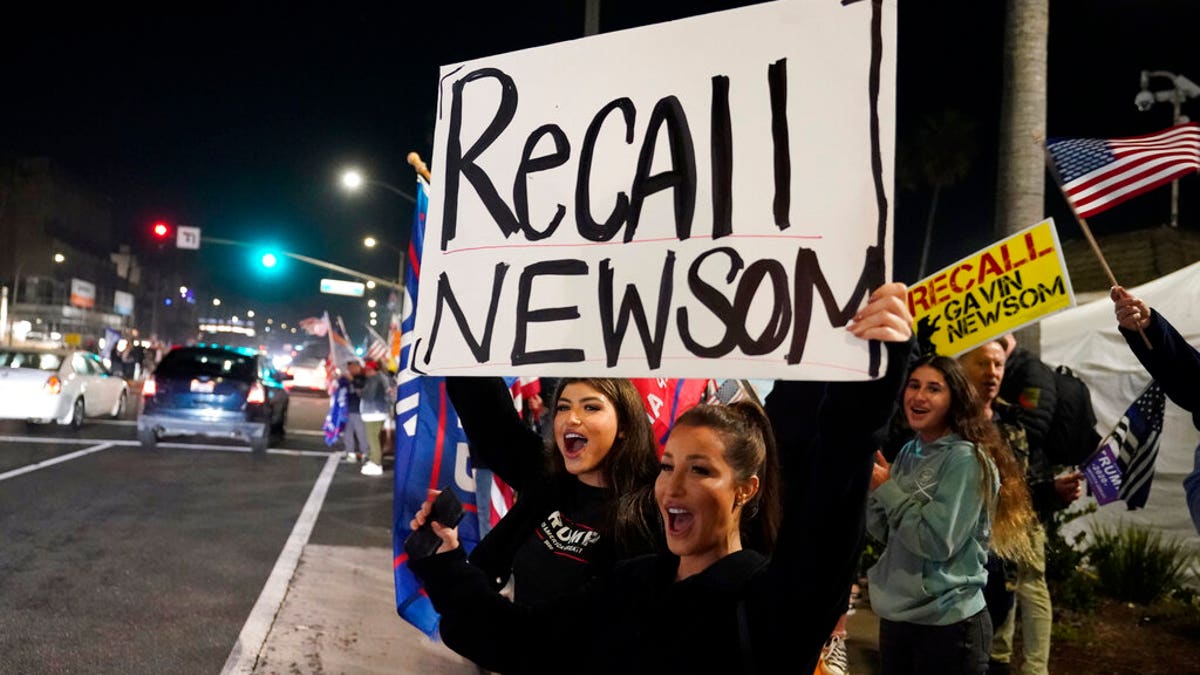Newsom ‘completely botched’ coronavirus vaccine rollout: Tom Del Beccaro
Former California Republican Party Chairman Tom Del Beccaro reacts to Gov. Gavin Newsom’s coronavirus response on ‘America Reports.’
The possibility of removing California Gov. Gavin Newsom from office may have seemed like a pipe dream in a state where Democrats outnumber Republicans two to one. But a recall campaign against the Democratic governor is nearing its required threshold as discontent over Newsom’s handling of the coronavirus grows.
Fox News recently spoke with recall expert Joshua Spivak, a senior fellow at the Hugh L. Carey Institute for Government Reform, who has written extensively on the topic, to ask what it would really take for a recall campaign to be successful.
Spivak said the recall against Newsom has a good chance of getting on the ballot, but it will be a harder road leading to his removal from office.
"The big problem for the Republicans is that, as opposed to 2003, California has become a much more Democratic state," Spivak said, referring to the successful 2003 recall campaign to oust Democratic Gov. Gray Davis. "Gavin Newsom got 62% of the vote. You need a 12% drop to get Gavin Newsom out ... Stuff like that has been done but that's a big hurdle to overcome."

FILE: Demonstrators shout slogans while carrying a sign calling for the recall of Gov. Gavin Newsom during a protest against a stay-at-home order amid the COVID-19 pandemic in Huntington Beach, Calif. (AP)
Per California law, the number of signatures a recall needs to gather to qualify for a ballot is equal to 12% of the number of voters in the last election for that office – in this case, just shy of 1.5 million. The signatures must also come from at least five counties.
As of Wednesday, recall organizers say they have gathered more than 1.3 million signatures. They have until March 17 to gather signatures but will necessarily need a 10% to 15% margin above the required threshold to compensate for invalidated signatures, Spivak said.
Spivak said California has among the best signature-gathering industries in the nation, pointing to the successful recall campaign against Davis in 2003.
"It’s something in California, especially because of all of the initiatives, it’s well-established. You put in enough money, you’re getting an initiative on the ballot. So why would this be any different?" he said.
EX-SAN DIEGO MAYOR KEVIN FAULCONER ANNOUNCES BID TO UNSEAT CALIFORNIA GOVERNOR NEWSOM
Once all signatures are gathered and validated, California would hold a special election no sooner than 88 days and no later than 125 days. But if it were close enough to a regularly scheduled election, it would likely occur on the same date.
A recall election would simply ask voters, should Newsom be removed: Yes, or No? If he is removed, then Californians would vote on his replacement.
"He is not allowed to be one of the replacement candidates – which may seem obvious, but in other (states) people have lost the recall … and won a replacement race," Spivak said.
Should the recall fail, Newsom would merely continue his term in office until the gubernatorial election in November 2022. Per California law, recalls are only permitted once per term.

FILE: California Gov. Gavin Newsom outlines his 2021-2022 state budget proposal during a news conference in Sacramento, Calif.
Recall campaigns also do not put caps on the number of people allowed to run. In 2003, for instance, there were 135 candidates running to replace Davis.
As the state approached a recall vote, Newsom would have no limits on the amount of funding he could receive to fend off his rivals.
"He could pretty much raise unlimited funds," Spivak said. "Campaign finance rules are usually very different for a recall than they are for a general election."
CALIFORNIA REPUBLICAN TAKING ON NEWSOM: PEOPLE 'UNITED BY FRUSTRATION' WITH PANDEMIC LOCKDOWNS
This is now the sixth recall attempt against Newsom since he’s taken office. It gathered momentum after the governor – who told Californians to stay home and spurn social gatherings throughout the coronavirus pandemic – was photographed at the high-end French Laundry restaurant in Northern California, appearing to ignore his own advice.
Asked why he believed this recall campaign has made this far, Spivak said it all came down to money.
"The pandemic helps the situation, but this is the sixth attempt against Newsom," Spivak said, pointing to similar efforts against Democratic governors in other states after the 2018 election. "So the fact that they’re trying to recall him, (the pandemic) is an issue, but it’s not exactly the first time to put this in play."
Still, Spivak played down the notion that Republicans have no clout in California. He pointed out that in the 2020 election, President Donald Trump received six million votes from California alone – more than any other state.
CLICK HERE TO GET THE FOX NEWS APP
"So, six million people voted for Donald Trump. How many of those do you need to get a recall on the ballot? Well, you need less than a third of those, right?"


























